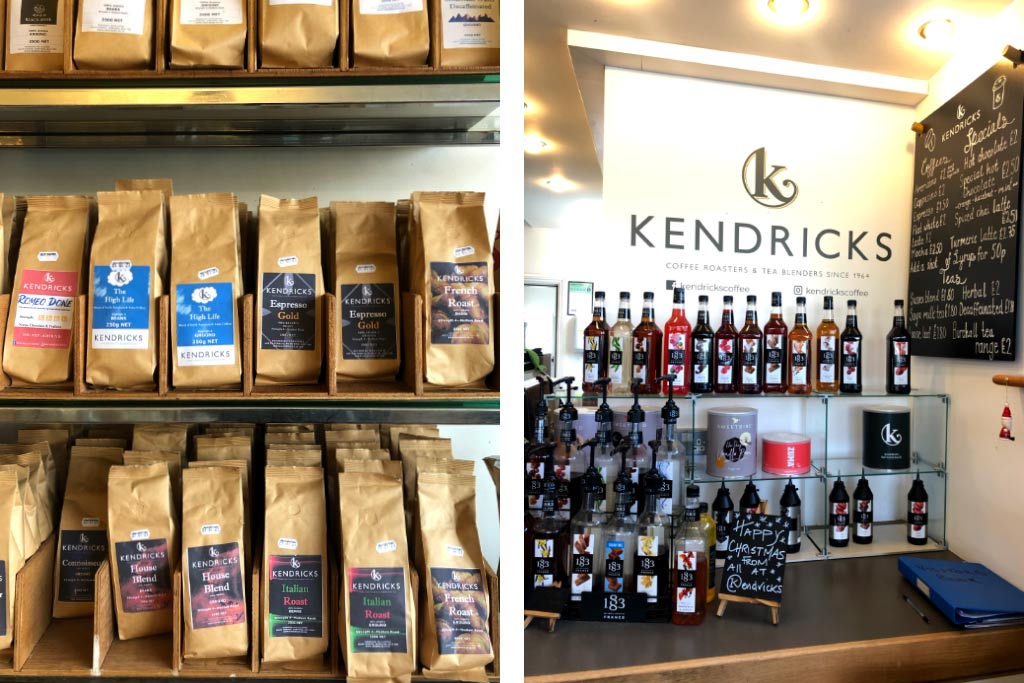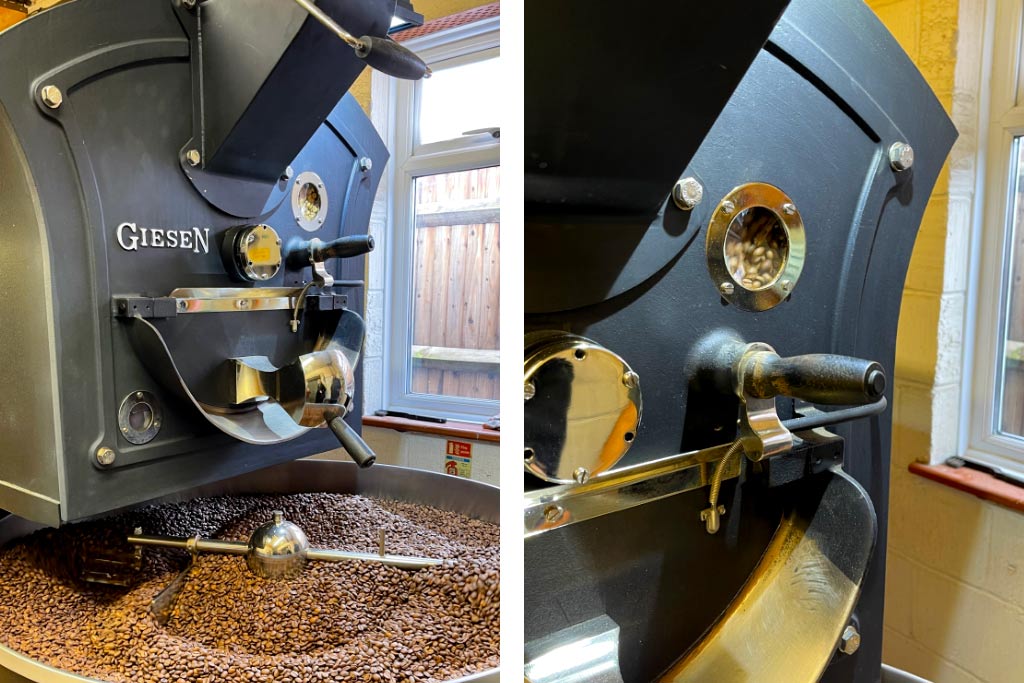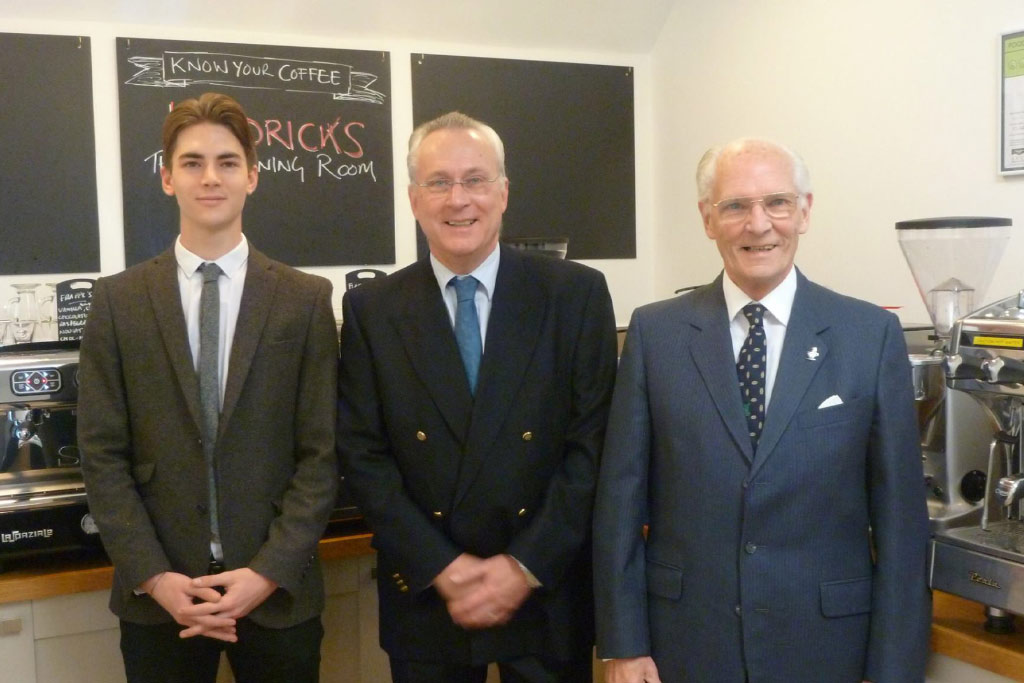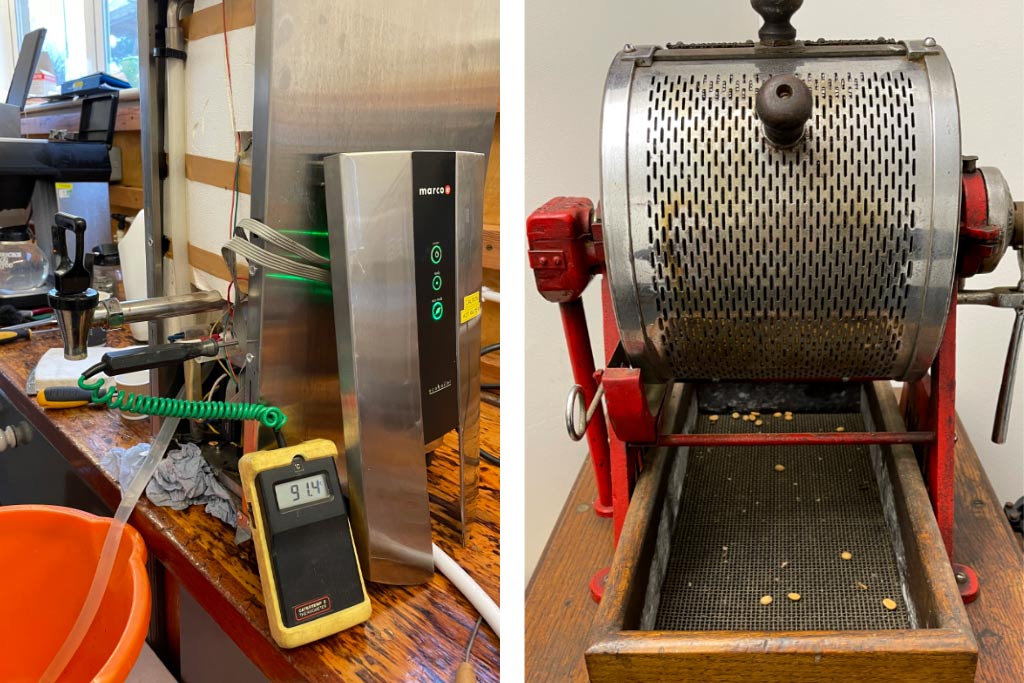Coffee Temperatures: Beans to Brew with Kendricks

If you’re a coffee person, you might already know a thing or two about coffee temperatures. You’ll probably know that pouring boiling hot water or milk over your beans will impair the delicious flavours. You might also be aware of how important the roast is to achieving the perfect blend for your morning pick-me-up. But did you know that creating different flavour profiles is highly dependent upon temperature?
We wanted to know more about the relationship between temperature and coffee, so we spoke to Kendricks Coffee Roasters, an independent, family-owned business based in West Sussex, about how they create exceptional coffee experiences, from the beans to the brew.
You can smell the rich, alluring notes of the coffee roasting as you approach Kendricks. From the outside, it’s a wholesome countryside shop selling a wide variety of tea and coffee blends and equipment, with steaming compostable cups of expertly crafted beverages to take away. But once we are led through to the back, it’s bustling with machinery gently roasting beans from all over the world. The machines are skillfully managed by roasters with decades of experience, who can tell when a bean is perfectly roasted by a minute change in colour..

Established by Thalben Kendrick Loydell in 1964, the company has lived through nearly six decades of ever-changing hot beverage culture, while seeing three generations of Loydells working amidst its beans. Supplying high-quality products and a specialised service has always been at the heart of the company’s ethos.
We are welcomed into Kendricks by Danny, whose passion for flat whites and science landed him a job heading up the sales and barista training at the business. He didn’t always like coffee, but a trip to Australia made his taste buds have a change of heart. “When I was 18 I tried instant coffee, and I spat it out and thought how can people drink that. And then I travelled to Australia, and their respect for coffee is so high.” After discovering the quality and craftsmanship that goes into coffee on his travels, he’s had a flat white every day since. “I’ve been in my element learning about the science behind it”, he says. “Because it is science at the end of the day, people don’t know what goes into it.”
We peek through tiny windows in the coffee roasting machines as the beans are jostled around at temperatures of over 200°C. “Each of our different blends has to be roasted at a specific temperature,” Danny tells us. “When it goes in the roaster as a green bean it’s roasted at full capacity, which is really hot, to get it to roast to a certain temperature very quickly. When it comes to that certain point, it then starts to decrease that roasting power to 80%, then to 60%, down to 40%.”

Like searing a steak, the final phase after the high-heat cycle involves slowly roasting the beans at a low temperature, to ensure it’s an even roast all the way through. Jim, their roaster, holds up the browned beans to show us the colour difference as they are almost ready to be cooled. The difference looks imperceptible to the untrained eye, but Jim’s 12 years of experience enable him to detect the most subtle colour changes, lest the flavour profile of the coffee be spoiled.
There are three main elements which determine whether the beans are roasted: the temperature, the colour and the crack. The crack refers to the two points at which the beans will emit a cracking sound during the roast, otherwise known as the first and second crack. The length of time between the second crack and the completion of the roast will create different flavour profiles, this ranges from a light roast with a more acidic flavour, to a dark roast with more sweetness and ‘toasty’ tones.
Once the roaster has checked that all of these elements are at the right level for their profile, the beans immediately have to be released into the cooling chamber, where all of the hot air is rapidly extracted. “Once you’ve got to that perfect point, you want to decrease the temperature as quickly as possible,” Danny explains. “Otherwise it’s going to add a few degrees to it and it’s going to change the outcome of the coffee when it goes into the cup.” Like a medium rare steak lover, you don’t want your beverage to become overdone.

Danny takes us upstairs to a room filled with espresso machines, where they provide barista training. Passionate about not only ensuring that their customers purchase good quality coffee and machinery, they want to make sure that baristas are using these products correctly to produce the best cups of tea or coffee possible. After all, brewing is as much of a craft as every other step of the process. “It’s nice for the baristas to see what we do,” Danny says. “We like to take people round because they can see the roasting process, and hopefully it gives them that spark and passion to put a little bit of love into the drinks they make.”
The espresso machine screeches into action as Danny explains how water temperature is critical to the flavour of the drink. “The ideal temperature of the water is around 94°C, but it’s hard to regulate within the machines. If the water comes out super hot and you put that straight on top of the coffee, it burns straight away. Once you burn the coffee it just tastes really bitter.” The best way to make the drink is by putting the water into the cup first, letting it cool for 30 seconds, then adding the extracted coffee.
It’s the same with tea. “In teas you want it just under 90°C, otherwise you start to burn the leaves. If you have a teabag and you pour from the kettle straight away, it might taste nice but you won’t get the best flavours,” Danny says.

With cappuccinos, flat whites and lattes seeing a huge rise in popularity in recent years, milk temperature is equally important for baristas. Danny holds up a steel milk jug with a stick-on thermometer glued to the side. The thermometer gauge changes colour as he heats the milk. “Boiling water to a certain point and boiling milk to a certain point is very, very different. The perfect drinking temperature is 65°C for the average person, but the problem is that a lot of cafés don’t have this temperature gauge.” Many baristas use their hands to determine whether they think it’s hot enough to serve, but that doesn’t mean it’s the perfect drinking temperature. It could be 40-50°C. “Having something to monitor your milk temperatures is a must. It’s going to make your cup of coffee perfect, every time,” Danny says.
Consistency is key to running a successful coffee shop, and the knowledge and training provided by Kendricks means that businesses can ensure customers, new or old, will receive exactly the same hot drink, no matter who makes it. “That consistency and flavour is what people really want. If someone’s just guessing the temperature and it’s 40°C one day, then 90°C another day, a customer won’t keep coming back to you,” Danny says.
Temperature is at the heart of that uniformity. “From start to finish as a company, monitoring temperature is so critical. We follow strict guidelines and regulations around the processes we monitor, and record every batch we roast and produce. We want drinking our tea and coffee to be a pleasurable experience.”
Shop our milk thermometers to create perfect coffee, every time.
You might also like:
Tyre Temperatures: The Key to Motorsport Success
Interview: Baking Pies with Piglet’s Pantry
Electronic Temperature Instruments: Our Story So Far